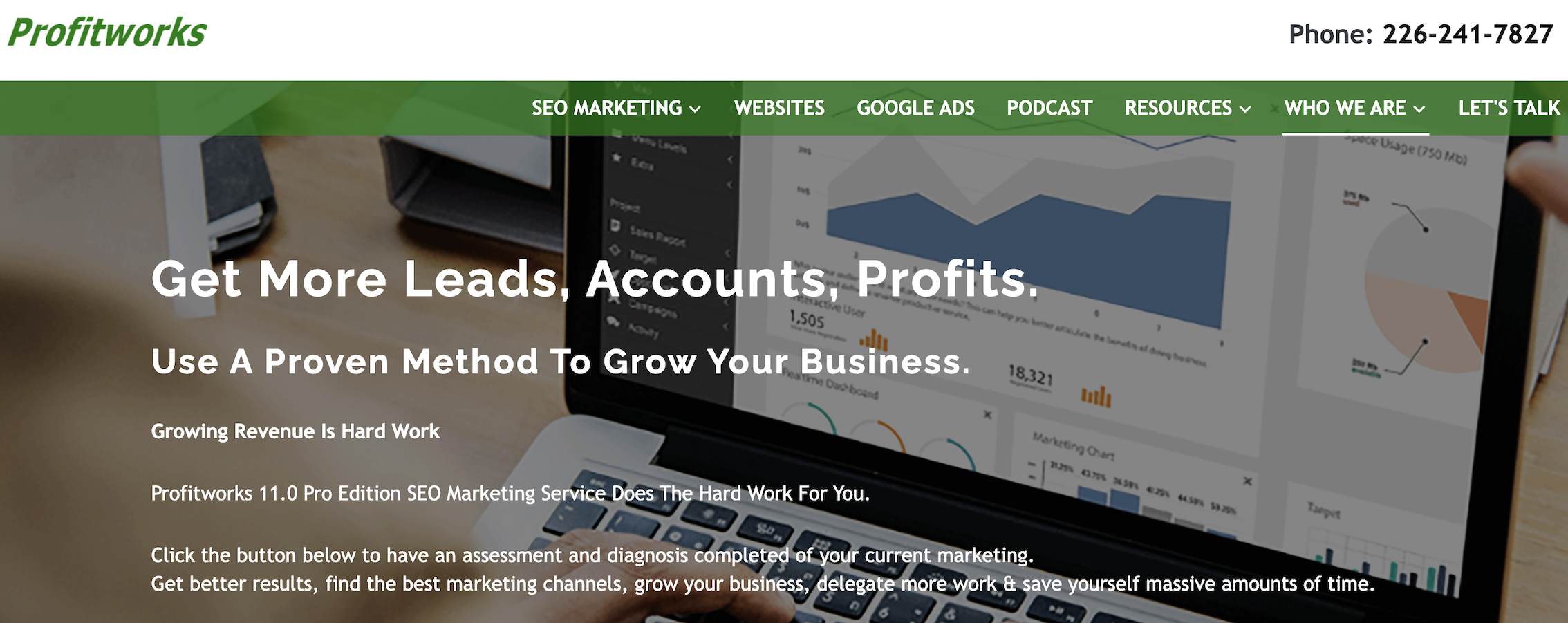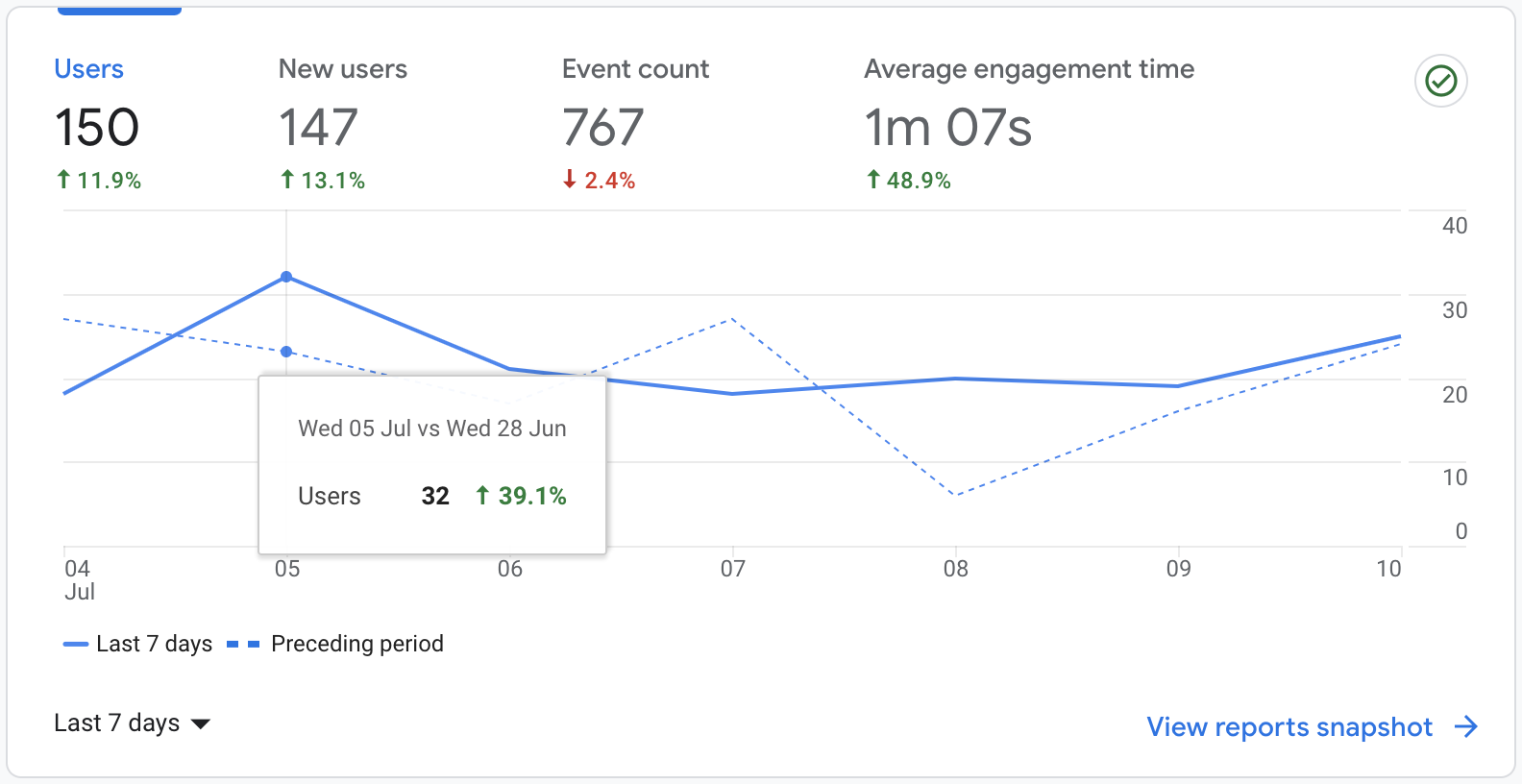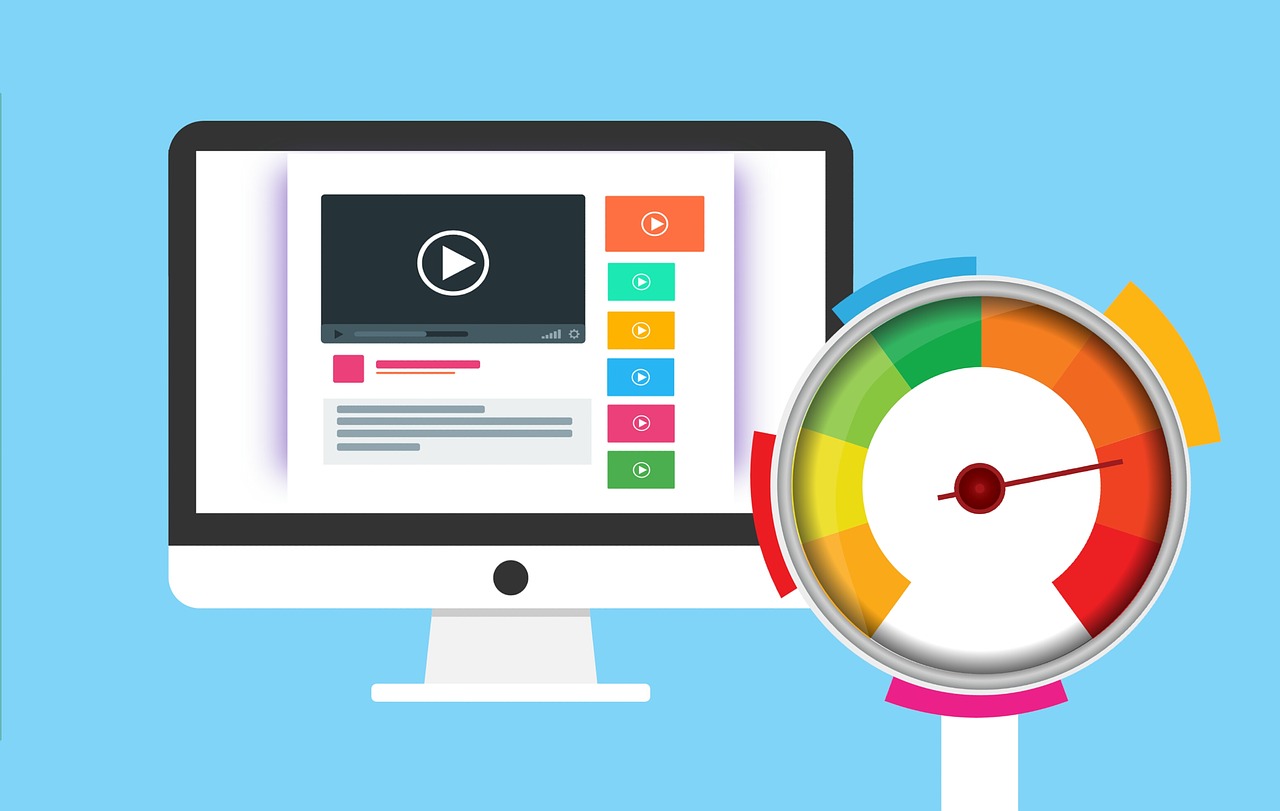Website Optimization Projects Best Practices: Documenting the Development Journey
In the digital age, a website is not just a public face of your business, it's also your salesperson, customer service agent, and marketing manager rolled into one. A well-optimized website can make or break your online presence.
It's not enough to simply have a site; it has to be refined and improved over time. This process, known as website optimization, is an essential component of your digital strategy.
Below, we'll discuss the best practices you can follow during website optimization projects. From understanding the importance of SEO to recognizing the significance of load time, we'll uncover the key aspects that should always be on top of your optimization checklist.
Click on each corresponding link to learn more:
- Why Does Website Optimization Matter?
- What is User Experience (UX)?
- UX Metrics and Key Performance Indicators (KPIs) Worth Following
- What Is Load Time and How Can It Be Improved?
- Using Search Engine Optimization (SEO) for Website Optimization
- Conversion Optimization
- Final Thoughts
- Key Takeaways
If you have any questions concerning website optimization, contact the marketing experts at Profitworks.
1. Why Does Website Optimization Matter?
Ever wondered why website optimization is such a big deal? After all, as long as your website's up and running, what's the harm in leaving things as they are?
The truth is, a website that's not been properly optimized is like a car that's been left in the garage to gather dust. It might still work, but it's not going to be super reliable. Likewise, an unoptimized website might work as a front for your business, but it won't do much to help you attract and retain customers.
Website optimization involves refining your site to increase its performance and functionality. It encompasses several aspects, including:
- Improving the loading speed,
- Enhancing usability,
- Ensuring mobile compatibility, and
- Optimizing for search engines.
When you optimize your website, you're not just polishing the look and feel; instead, you are strategically aligning it with business objectives - be it driving more traffic, generating leads, or boosting conversions.
Optimization also makes websites much more robust - a crucial consideration for sites housing key data (e.g., a software architectural design document or customer information) that need to be quickly and easily accessed by large numbers of users.
An unoptimized mess of a website may simply crash under the weight of too many people trying to open it at once.

Ensure your website is organized and user-friendly.
2. What is User Experience (UX)
User experience (UX) plays a central role in the optimization process. Ensuring that your website provides a seamless, enjoyable experience for users can significantly impact your site's performance and conversion rates. Remember - a frustrated user is unlikely to become a loyal customer.
UX includes several elements, such as:
- Layout,
- Navigation,
- Readability, and
- The overall design of your site.
It's not just about making your site look pretty; it's about making sure your users can find what they're looking for without any hassle.
The easier it is for users to interact with your site, the more likely they are to stay longer and return in the future.
The first step in optimizing UX is to understand your audience. Knowing who your users are and what they want can help you design a website that caters to their needs effectively.
There are a few methods you can use to better understand your audience:
- Conduct user surveys: Directly ask your users about their needs, preferences, and concerns.
- Use analytics tools: Analyze user behaviour to identify patterns and trends.
- Utilize heatmaps: These can unveil how users interact with your site, showing you where they click, scroll, or hover.
Another key aspect of UX is mobile-friendliness. For instance, the graph below demonstrates that nearly 60% of web traffic comes from mobile devices. Therefore, it's crucial that your website is optimized for phone & tablet use. If your site isn't mobile-friendly, you risk losing out on a large chunk of potential customers.

Data from Statista.
Make sure to adopt a responsive design, which allows your website to adapt to various screen sizes and devices - no matter if your users are on a smartphone, tablet, or desktop.
3. UX Metrics and Key Performance Indicators (KPIs) Worth Following
When it comes to enhancing your website, there's a range of UX metrics and key performance indicators (KPIs) you should consider tracking. These actionable data points can provide valuable insights into how well your site resonates with users and where improvements may be needed. For example,
- The task success rate can reveal the percentage of tasks completed successfully by users on your site. A high task success rate is indicative of effective user interface design and intuitive navigation.
- Time-on-task provides information about the average time users spend accomplishing a specific task on your website. This metric can help identify areas that require streamlining or simplification to enhance efficiency.
- User error rate measures the frequency of errors made by users while interacting with your website - reducing this rate improves overall user satisfaction.
Additionally, comparing navigation versus search behaviours can shed light on whether users find your content organically or if they need search tools to locate specific items.
Lastly, don't forget about the System Usability Scale (SUS) - a well-known questionnaire that allows you to measure the overall usability of your website. It contains 10 items that users rate on a 5-point Likert scale, with higher scores indicating greater satisfaction.

Utilize Google Analytics to track UX metrics and KPIs
4. What Is Load Time and How Can It Be Improved?
Load time is another critical factor in website optimization. The speed at which your website loads can make a significant difference in user experience and search engine ranking.
Slow-loading websites are not only frustrating for users but they also result in lower search engine rankings. Simply put, if your website takes too long to load, you're likely to lose potential customers before they even have a chance to engage with your content.
It is estimated by Google that 53% of mobile site visitors leave a page that takes longer than 3 seconds to load. With this in mind, it's clear that every second counts when it comes to website load time.

Image by Mohamed Hassan from Pixabay
Fortunately, there are several ways in which you can improve your website's load time:
A) Optimize Images
Images can significantly slow down your website if they're not properly optimized. High-resolution images may make your site visually appealing, but they can also lead to longer load times. Therefore, it's crucial to strike a balance between image quality and file size.
Optimizing images involves reducing their file size without significantly compromising their quality. You can achieve this by compressing your images using tools like Adobe Photoshop or online image compression services.
Also, consider using the appropriate image format for your needs - JPEG for photographs and PNG for logos or graphics with transparent backgrounds.
Alternatively, you can implement a lazy loading technique that defers the loading of images until they're actually needed. This way, the initial load time can be reduced considerably.
B) Leverage Browser Caching
Browser caching stores copies of your website's files in a user's browser. The next time the user visits your site, their browser will load the cached version instead of downloading everything again from your server. This can greatly speed up your website's load time for returning visitors.
To leverage browser caching, you can use tools such as YSlow or Google PageSpeed Insights. These tools can then provide recommendations on how to improve your caching strategy.
C) Minify CSS, JavaScript, and HTML
The problem with scripts and codes is that they can significantly slow down your website's load time. Minifying CSS, JavaScript, and HTML involves removing unnecessary characters like whitespace, line breaks, and comments from files without affecting functionality.
Minification can considerably decrease the size of your code and reduce the amount of time it takes for the browser to download and execute it. Tools such as CSSNano and UglifyJS are commonly used for this purpose.
D) Load Time Metrics
Understanding load time metrics is crucial to optimizing your site and retaining users, as slow speed can drive away potential customers.
The key measures you need to pay attention to are Time to First Byte (TTFB), Time to First Draw (TTFD), and Time to Usability.
TTFB is the time it takes for your server to start sending data in response to a user's request. An ideal TTFB is under 200 milliseconds, which you can achieve by optimizing your server code and using Content Delivery Networks (CDNs).
The second metric, TTFD, refers to how long it takes before the user sees the first content on their screen. To improve this metric, avoid letting JavaScript block page rendering and minimize the number of additional files needed for loading.
Finally, 'Time to Usability' indicates how long it takes before users can fully interact with your website - ideally, no more than 2-3 seconds should pass between the user entering a URL or clicking a link and being presented with a fully functional site.
Here's a handy table summarizing these metrics:
|
Metric |
Definition |
Ideal time |
Optimization tips |
|
Time to First Byte (TTFB) |
The time between the user entering the site URL and the browser receiving the first data from the server. |
Under 200 milliseconds. |
Optimize server code, and use Content Delivery Networks (CDNs). |
|
Time to First Draw (TTFD) |
The time needed for the user to see the first content on screen. |
As fast as possible. |
Don't let JavaScript block page rendering; minimize the number of additional files. |
|
Time to Usability |
The time required before site content is completely visible and clients can interact fully. |
2-3 seconds after entering the address/clicking the link. |
Use optimized code paths and asynchronous/non-blocking JavaScript practices. |
For detailed analyses of page load times with these metrics, try to use tools such as Google PageSpeed Insights or WebPageTest. Google Analytics also provides valuable insights into user engagement that could help further optimize your website speed.
5. Using Search Engine Optimization (SEO) for Website Optimization
Search Engine Optimization (SEO) is a vital part of website optimization projects. It involves refining your website's content and structure to improve its visibility on search engine results pages.
At the core of SEO is keyword research. Knowing what keywords your target audience uses when searching for products or services like yours can help you optimize your content accordingly. Tools like Google Keyword Planner or SEMrush can provide valuable insights into popular keywords in your industry.
But SEO isn't just about stuffing your content with keywords. It's equally crucial to ensure that your website provides valuable and relevant content that resonates with users. Search engines prioritize sites that offer high-quality, user-friendly content.
Various On-page SEO elements play a key role in improving your site’s visibility, such as:
- Meta descriptions,
- Title tags, and
- Header tags.
These elements should be carefully crafted to include target keywords and attractive descriptions that will compel users to click on your site.
Off-page SEO involves strategies primarily focused on backlinks - links from other websites pointing to yours. Backlinks signal to search engines that your website offers trustworthy and valuable content, boosting your ranking in search results.
With nearly 93% of online experiences beginning with a search engine, effective SEO practices are vital for driving traffic to your site and enhancing visibility.

Image by Photo Mix from Pixabay
Key SEO Metrics for Website Optimization
Relying on SEO metrics can significantly boost your website's performance, driving more organic traffic and improving your online visibility. These key metrics act as indicators of how well your website is performing in search engine rankings.
They can help you understand what's working, what isn't, and where you need to focus your optimization efforts next.
To streamline your website optimization projects, keep a keen eye on these vital SEO metrics:
- Organic traffic: This measures the number of visitors coming to your site from unpaid search results. A steady increase in organic traffic indicates that your SEO strategies are effective.
- Click-through rate (CTR): CTR is the ratio of users who click on a specific link to the number of total users who view a page or ad. It's an excellent metric for evaluating how well your keywords and meta descriptions are performing.
- Exit rate: The exit rate shows where people are leaving your site. If certain pages on your website have high exit rates, it might indicate that they're not providing valuable content or aren't user-friendly.
- Pages per session: This metric gives insight into user engagement by indicating how many pages a visitor views before leaving your site. More pages per session often point towards higher user engagement.
Remember also to monitor which keywords rank highest for driving traffic to your site - knowing this allows you to target those keywords strategically, further boosting visibility and attracting relevant audiences.
6. Conversion Optimization
Conversion optimization is the process of improving your website's ability to convert visitors into customers. It revolves around making your website as user-friendly, engaging, and persuasive as possible to encourage users to take desired actions - be it making a purchase, subscribing to a newsletter, or filling out a contact form.
The key is to ensure that your website effectively communicates the value of your products or services. Incorporate the following to enhance your site’s persuasiveness:
- Compelling headlines,
- Informative product/service descriptions, and
- High-quality images.
Moreover, simplifying the conversion process can also boost your conversion rates. This could mean:
- Streamlining the checkout process,
- Reducing the number of form fields, or
- Offering multiple payment options.
Lastly, don’t forget the role of trust in conversions. Trust signals like testimonials, reviews, and security badges can reassure visitors about your credibility and increase their likelihood of converting.
Vital Metrics To Follow When Optimizing Conversion
You're on the right track if you're keeping an eye on these critical metrics while optimizing conversion rates:
- Macro and Micro conversion metrics offer a comprehensive view of your website's performance by tracking both significant actions (like purchases) and smaller, supportive actions (like email sign-ups or video views). Monitoring these conversions provides insights into customer behaviour and helps identify areas for improvement.
- Form Conversions are used to measure the number of visitors who completed a form, giving insight into how well your forms are performing in leading to conversion.
- CTA (Call-To-Action) Conversions are another key indicator that tells you how effective your CTAs are in persuading users to take the desired action.
- Bounce Rate shows the percentage of visitors who leave your site without interacting beyond the initial page - a high bounce rate could signify issues with user experience or the relevance of content.
- NPS (Net Promoter Score) measures customer loyalty and satisfaction. A high NPS indicates that your customers are not only satisfied but also willing to recommend your website to others, which can lead to higher conversions in the future.
7. Final Thoughts
Website optimization isn't a one-time task - it's an ongoing journey. To stay competitive in today's digital landscape, it's crucial to continuously refine and improve your site.
From improving user experience and load time to implementing effective SEO strategies and optimizing conversion rates, every aspect plays a pivotal role in your website's overall performance.
Remember, the ultimate goal is to create a site that not only looks good but also aligns with your business objectives, resonates with your audience, and works hard for you.
By keeping a pulse on key metrics and following best practices, you can ensure your website remains a powerful tool in your digital arsenal.
As long as you stay committed to the process of optimization, your website will keep evolving with the times, consistently delivering value to your visitors and driving success for your business. Good luck with your website optimization journey!
8. Key Takeaways
- Website optimization is essential for enhancing user experience and driving online success.
- User Experience (UX) focuses on understanding your audience and improving site design.
- Load time affects user satisfaction and search engine ranking; optimize this with image compression and code minification.
- Search Engine Optimization (SEO) boosts website visibility through keyword research and quality content.
- Conversion optimization turns visitors into customers via effective communication, streamlined processes, and trust-building.
- Monitoring key metrics aids in identifying areas for improvement across UX, load time, SEO, and conversions.
- Website optimization is an ongoing journey that requires continuous commitment for continued evolution and success.